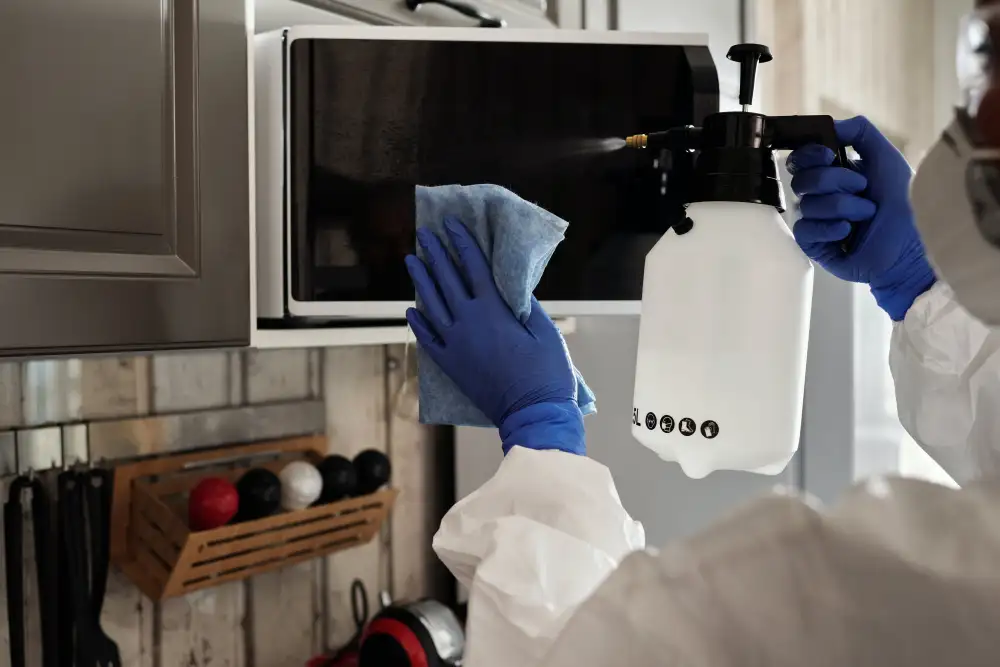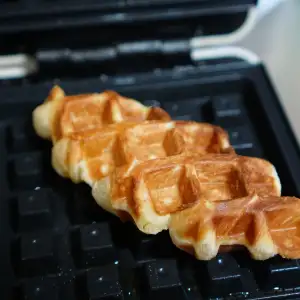Mastering the Art of Cooking with a Convection Oven: Elevate Your Home Cooking Game!

Convection ovens have revolutionized the way we cook at home, offering a faster and more efficient way to prepare meals. These innovative appliances utilize a fan and exhaust system to circulate hot air evenly around the food, resulting in faster cooking times and more evenly cooked dishes.
Unlike conventional ovens that rely on radiant heat, convection ovens use both radiant heat and forced hot air to cook food. This unique combination ensures that heat is distributed evenly throughout the oven, eliminating hot spots and reducing cooking time by up to 25%.
Whether you're a seasoned chef or a novice cook, mastering the art of cooking with a convection oven can elevate your culinary skills to new heights. With their ability to roast, bake, broil, and even dehydrate food, these versatile appliances offer endless possibilities for creating delicious meals.
In the following sections, we will delve deeper into how convection ovens work, explore their benefits over conventional ovens, provide tips for using them effectively, debunk common misconceptions surrounding them, compare them with traditional ovens, share popular recipes specifically designed for convection cooking, and guide you on how to properly maintain and clean your convection oven. So let's dive in and unlock the full potential of this modern kitchen tool!
How convection ovens work
Convection ovens utilize a fan and exhaust system to circulate hot air evenly throughout the cooking chamber. This constant airflow helps to distribute heat more efficiently, resulting in faster and more even cooking.
The fan in a convection oven works by drawing in cool air from the room and then heating it up using an electric element or gas burner. The heated air is then blown back into the oven cavity, creating a continuous cycle of hot air circulation.
This circulating hot air provides several advantages when it comes to cooking. Firstly, it reduces cooking time by up to 25% compared to conventional ovens. The consistent heat distribution ensures that food cooks evenly on all sides, eliminating the need for frequent turning or rotating.
Additionally, convection ovens are known for their ability to brown and crisp food more effectively. The moving hot air helps to remove moisture from the surface of the food, resulting in a crispy exterior while retaining moisture inside.
Overall, the fundamental principle behind how convection ovens work is simple: they use forced hot air circulation to cook food faster and more evenly than traditional ovens. By harnessing this technology, home cooks can achieve professional-level results with ease.
Benefits of using a convection oven
1. Faster Cooking: Convection ovens use a fan to circulate hot air, resulting in faster and more even cooking. This can significantly reduce cooking time, making it perfect for busy individuals or those who want to prepare meals quickly.
2. Energy Efficiency: The circulating hot air in a convection oven allows for lower cooking temperatures and shorter cooking times. As a result, less energy is used compared to conventional ovens, leading to reduced energy consumption and lower utility bills.
3. Even Cooking: The fan in a convection oven ensures that heat is distributed evenly throughout the cooking chamber. This eliminates hot spots and cold areas, resulting in perfectly cooked dishes with consistent texture and flavor.
4. Improved Browning and Crisping: The constant circulation of hot air in a convection oven helps to achieve better browning and crisping on the surface of food items like roasted meats, vegetables, and baked goods. This enhances the visual appeal and taste of the final dish.
5. Versatility: Convection ovens offer multiple cooking modes, including bake, broil, roast, and dehydrate. This versatility allows you to experiment with various recipes and techniques, expanding your culinary repertoire.
6. Moisture Retention: Unlike conventional ovens that can dry out food during prolonged cooking times, convection ovens help retain moisture by sealing in natural juices. This results in juicier meats and moist baked goods.
7. Reduced Flavor Transfer: With separate heating elements for each rack or tray, convection ovens minimize flavor transfer between different dishes being cooked simultaneously. You can cook savory and sweet dishes at the same time without worrying about flavors mixing.
Incorporating a convection oven into your kitchen arsenal can revolutionize your home cooking experience by saving time, energy, and ensuring consistently delicious results across a wide range of recipes.
Tips for using a convection oven effectively
1. Adjust cooking time and temperature: Since convection ovens circulate hot air, cooking times can be reduced by about 25%. Lowering the temperature by 25°F (14°C) is recommended to prevent overcooking.
2. Use shallow and open pans: For optimal airflow, use shallow pans that allow the hot air to circulate evenly around the food. Open pans also help in browning and crisping.
3. Avoid overcrowding: To ensure even cooking, leave enough space between food items. Overcrowding can hinder proper air circulation and result in unevenly cooked dishes.
4. Rotate baking sheets: When baking multiple trays of cookies or pastries, rotate them halfway through the cooking process to ensure even browning.
5. Reduce cooking times for recipes: When using recipes designed for conventional ovens, it's best to reduce the cooking time by 25% when using a convection oven. Keep an eye on your food as it may cook faster than expected.
6. Monitor delicate foods closely: Delicate foods like cakes, soufflés, and custards may require special attention in a convection oven due to the intense heat and airflow. Check them frequently to prevent over-browning or drying out.
7. Use lower-sided bakeware: Opt for lower-sided bakeware instead of high-sided ones as they allow better airflow around the food, resulting in more even cooking.
8. Preheat properly: Preheating is crucial with convection ovens as they heat up quickly. Make sure to preheat the oven before adding your food for consistent results.
By following these tips, you can make the most of your convection oven and achieve deliciously cooked meals with ease!
Common misconceptions about convection ovens
1. Convection ovens dry out food: This is a common misconception, but in reality, convection ovens actually help retain moisture in food. The circulating hot air ensures even heat distribution, resulting in juicier and more flavorful dishes.
2. Convection ovens cook faster: While it's true that convection ovens can cook food faster than conventional ovens, it's important to adjust cooking times and temperatures accordingly. It's always best to refer to the recipe or consult the oven's manual for specific instructions.
3. Only professional chefs need convection ovens: Many people believe that convection ovens are only necessary for professional kitchens. However, anyone who enjoys cooking can benefit from a convection oven's ability to enhance flavors and provide consistent results.
4. Convection ovens are complicated to use: Some may think that operating a convection oven requires advanced culinary skills, but this is not the case. Most modern convection ovens come with user-friendly controls and presets that make it easy for home cooks to utilize this technology.
5. Convection ovens are expensive: While there are high-end models available at higher price points, there are also affordable options on the market. Additionally, the energy efficiency of convection ovens can save money on utility bills in the long run.
By debunking these misconceptions, we can appreciate the true value of convection ovens and harness their potential for elevating our home cooking game.
Comparison between convection ovens and conventional ovens
When it comes to cooking, the choice of oven can greatly impact the outcome of your dishes. Convection ovens and conventional ovens are two popular options, each with their own advantages.
Conventional ovens use radiant heat from the top and bottom heating elements to cook food. This can result in uneven cooking, with hot spots and cool areas in the oven. On the other hand, convection ovens use a fan to circulate hot air evenly throughout the oven cavity. This ensures that food is cooked more uniformly, resulting in better browning and crispness.
One major advantage of convection ovens is their ability to cook food faster than conventional ovens. The circulating hot air reduces cooking time by up to 25%. This not only saves you time but also helps retain moisture in your dishes, resulting in juicier meats and perfectly baked goods.
Another benefit of convection ovens is their versatility. They can be used for a wide range of cooking methods including baking, roasting, broiling, and even dehydrating. The consistent heat distribution allows you to cook multiple dishes at once without worrying about flavors mixing or uneven cooking.
However, it's important to note that not all recipes are suitable for convection cooking. Delicate items like soufflés or custards may not fare well in a convection oven as the circulating air can cause them to deflate or cook too quickly. It's always best to consult your recipe or adjust the temperature and cooking time accordingly when using a convection oven.
In terms of energy efficiency, convection ovens have an edge over conventional ovens. The shorter cooking times mean less energy consumption overall. Additionally, because food cooks faster, there is less need for preheating which further reduces energy usage.
While conventional ovens have their merits, convection ovens offer superior performance and convenience for most home cooks. With their even heat distribution, faster cooking times, and versatility, convection ovens elevate your home cooking game to a whole new level. So why not embrace the convenience and efficiency of a convection oven and take your culinary skills to new heights?
Popular convection oven recipes
Popular convection oven recipes offer a wide range of delicious dishes that can be easily prepared at home. One such recipe is roasted chicken, where the convection oven ensures even browning and crispy skin. Another favorite is baked salmon, which cooks quickly and retains its moisture with the circulating hot air. For dessert lovers, convection ovens are perfect for baking cookies, ensuring they come out evenly golden and perfectly chewy. And let's not forget about homemade pizzas! The convection oven's high heat and circulating air create a crispy crust while melting the cheese to perfection. With these popular recipes, you can truly elevate your home cooking game using a convection oven.
Maintenance and cleaning of convection ovens
Maintenance and cleaning of convection ovens is essential to ensure their optimal performance and longevity. Regular maintenance includes removing any food debris or spills from the interior after each use. It is recommended to let the oven cool down before cleaning it with a mild detergent and warm water. Avoid using harsh chemicals or abrasive materials that can damage the oven's surfaces. Additionally, it is important to clean the oven's fan and filters regularly to prevent any build-up of grease or dirt. Proper maintenance will not only keep your convection oven functioning efficiently but also contribute to safe and hygienic cooking experiences.
In conclusion, convection ovens are a game-changer in the world of home cooking. With their ability to circulate hot air evenly, they ensure faster and more efficient cooking. The benefits of using a convection oven are numerous - from shorter cooking times to juicier meats and crispier baked goods.
By following some simple tips, such as adjusting cooking times and temperatures, you can make the most out of your convection oven. It's important to understand that convection ovens work differently than conventional ovens, but once you get the hang of it, you'll be able to elevate your culinary skills.
Don't fall for common misconceptions about convection ovens. They do not dry out food or require special cookware. In fact, they enhance flavors and textures while allowing you to cook multiple dishes at once without flavor transfer.
When comparing convection ovens to conventional ovens, it's clear that the former offers superior performance and versatility. Whether you're baking, roasting, or broiling, a convection oven will deliver consistent results every time.
To inspire your culinary adventures with a convection oven, there is an array of popular recipes available. From perfectly roasted chicken to delectable pastries, these recipes will showcase the true potential of your appliance.
Lastly, maintaining and cleaning your convection oven is essential for its longevity and optimal performance. Regularly wiping down surfaces and cleaning removable parts will ensure that your oven stays in top shape for years to come.
So why wait? Embrace the convenience of a convection oven and take your home cooking game to new heights. With faster cooking times, improved flavors, and endless possibilities in the kitchen, there's no doubt that a convection oven is an invaluable tool for any aspiring chef or seasoned cook alike.
Published: 04. 02. 2024
Category: Home



